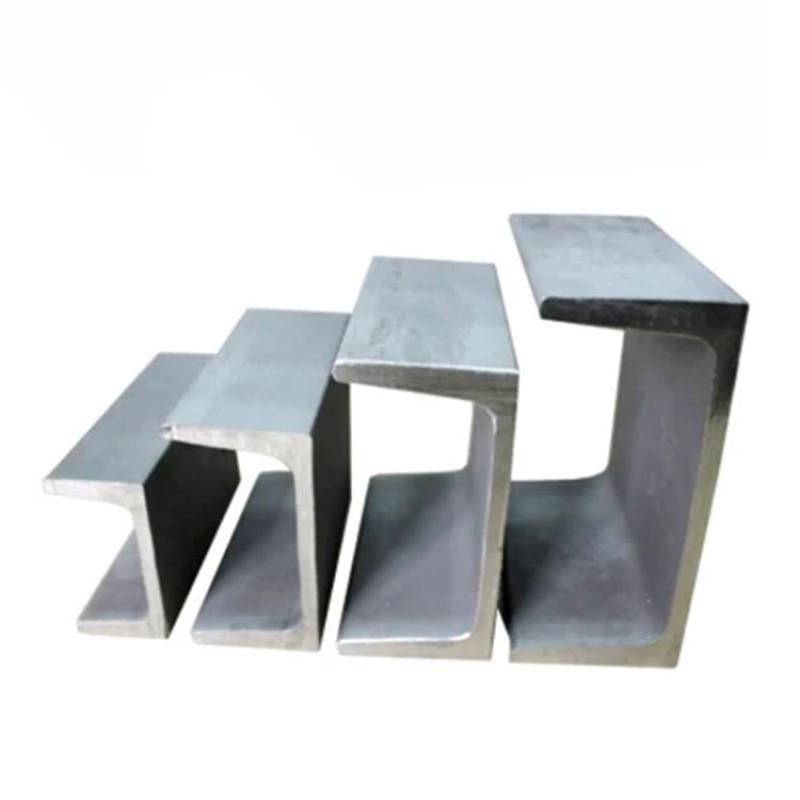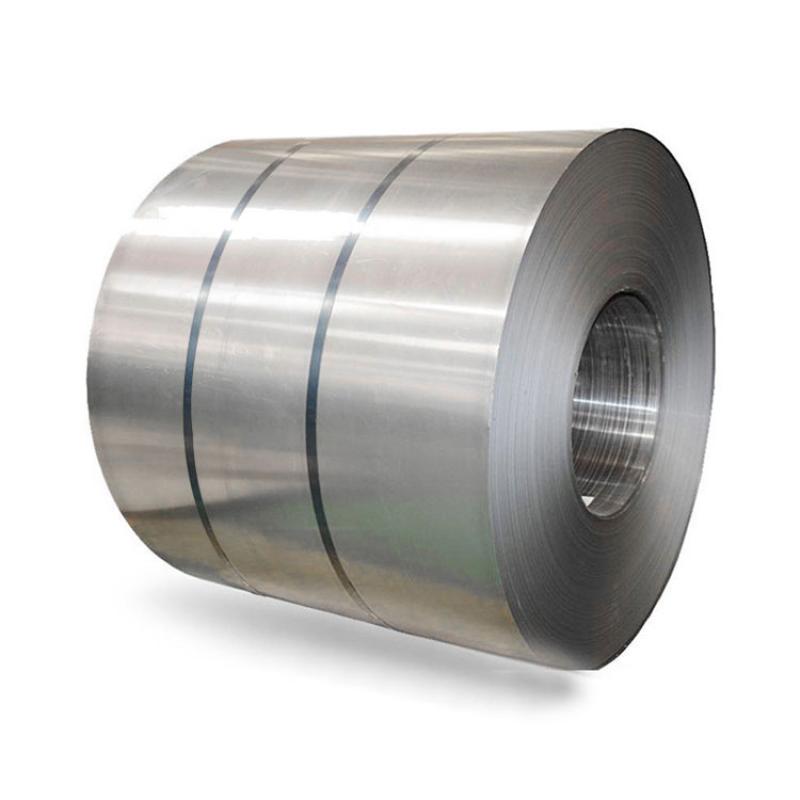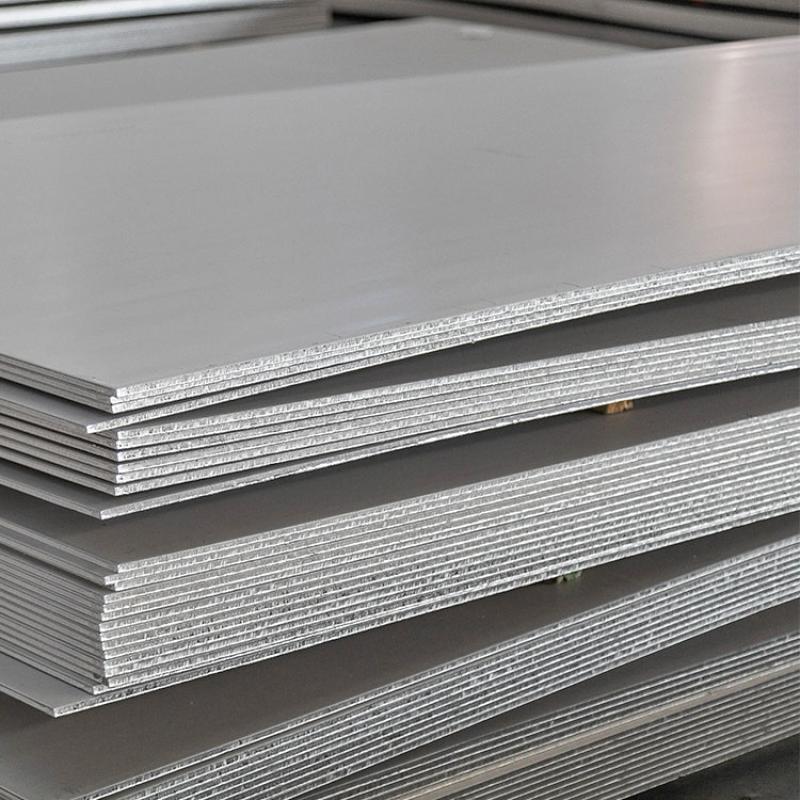Stainless Steel U Channel is a long steel strip with a grooved section. Same as I-beam, Stainless Steel U Channel can also be divided into ordinary channel steel and light channel steel. The model and specification are also expressed by waist height (h) × Leg width (b) × Waist thickness (d) expressed in mm, such as 120 × fifty-three × 5 Channel steel, that is, round steel with waist height of 120mm, shall be distinguished by adding a, b, c, etc. to the right of the model.Feathurs1.
Contact Now
Stainless Steel C Channel is an excellent candidate for most processing techniques as well as both indoor and outdoor applications. This product has a semi-smooth, dull grey finish and tapered legs. Stainless Steel C Channel is a high strength material with excellent corrosion resistance making it idea for walkways, ramps, and other architectural uses. Feathurs1. Stainless steel has different grades, correspond to different hardness, thermoplastic, plasticity and weldability. If you don't understand, you can tell us your requirements. 2.
Contact Now
Stainless Steel Channel is a long steel strip with a grooved section. Same as I-beam, Stainless Steel Channel can also be divided into ordinary channel steel and light channel steel. The model and specification are also expressed by waist height (h) × Leg width (b) × Waist thickness (d) expressed in mm, such as 120 × fifty-three × 5 Channel steel, that is, round steel with waist height of 120mm, shall be distinguished by adding a, b, c, etc. to the right of the model.Feathurs1. Stainless steel has different grades, correspond to different hardness, thermoplastic, plasticity and weldability.
Contact Now
316 is actually a stainless steel material, which contains a certain amount of Mo element. The performance of this steel has exceeded that of 301 steel and 304 stainless steel. It has a very wide range of applications. Even in high-temperature environment, it will not be eroded and corroded by high temperature. It can also be used in the marine environment, and will not be polluted by some outer air, resulting in corrosion.Feathurs1. Stainless steel has different grades, correspond to different hardness, thermoplastic, plasticity and weldability.
Contact Now
These 316 stainless steel angles maintain their physical properties at high temperatures. These angles are strong, durable, and often used for parts in food and beverage, chemical processing, and cryogenic industries.Feathurs1. Stainless steel has different grades, correspond to different hardness, thermoplastic, plasticity and weldability. If you don't understand, you can tell us your requirements. 2. Stainless steel can be customized for different surfaces, and different surfaces have different applications. For example, 8k mirrors are generally used for decoration. 3.
Contact Now
Grade 316 is the standard molybdenum-bearing austenitic grade, particularly higher resistance to pitting and crevice corrosion in chloride environments. It is readily brake or roll formed,welded, soldered and cut by both thermal and mechanical methods.The austenitic structure gives excellent toughness, even down to cryogenic temperatures.Grade 316L, the low carbon version of 316, is highly resistant to sensitisation (grain boundary carbide precipitation) and so is extensively used in heavy gauge welded components (about 5mm and over).
Contact Now
304L Stainless Steel Channel is a long steel strip with a grooved section. Same as I-beam, stainless steel channel steel can also be divided into ordinary channel steel and light channel steel. The model and specification are also expressed by waist height (h) × Leg width (b) × Waist thickness (d) expressed in mm, such as 120 × fifty-three × 5 Channel steel, that is, round steel with waist height of 120mm, shall be distinguished by adding a, b, c, etc. to the right of the model.Feathurs1.
Contact Now
201 Stainless steel channel steel is a long steel strip with a grooved section. Same as I-beam, stainless steel channel steel can also be divided into ordinary channel steel and light channel steel. The model and specification are also expressed by waist height (h) × Leg width (b) × Waist thickness (d) expressed in mm, such as 120 × fifty-three × 5 Channel steel, that is, round steel with waist height of 120mm, shall be distinguished by adding a, b, c, etc. to the right of the model.Feathurs1.
Contact Now
Stainless steel channel steel is a long steel strip with a grooved section. Same as I-beam, stainless steel channel steel can also be divided into ordinary channel steel and light channel steel. The model and specification are also expressed by waist height (h) × Leg width (b) × Waist thickness (d) expressed in mm, such as 120 × fifty-three × 5 Channel steel, that is, round steel with waist height of 120mm, shall be distinguished by adding a, b, c, etc. to the right of the model.Feathurs1.
Contact Now
Due to the molybdenum content of 316 stainless steel, this stainless-steel material delivers superior corrosion and heat resistance. It withstands a variety of corrodents such as sulfuric acid, bromides, iodides, and chlorides and can, therefore, be used in marine environments.Stainless steel flat steel is used for bridges, frames, fences, power transmission ships, vehicles, etc. in construction projects.
Contact Now
2205 is a ferritic-austenitic stainless steel which combines many of the beneficial properties of both ferritic and austenitic steels. As a result of high chromium and molybdenum contents, the steel has very good pitting and uniform corrosion resistance to stress corrosion cracking as well as high mechanical strength. 2205 has good weldability and can be welded using most of the welding techniques for stainless steels. Due to the balanced composition, when welded correctly, the heat affected zone contains sufficient austenite to avoid the risk of localized corrosion.Feathurs1.
Contact Now
The wall thickness of the pipes ranges from 0.5mm to 6.35mm and the length vary according to the custom needs. The 316 stainless steel welded pipe range up to 24 inches and the electric fusion welded pipes range up to 100 inches.Feathurs1. Stainless steel has different grades, correspond to different hardness, thermoplastic, plasticity and weldability. If you don't understand, you can tell us your requirements. 2. Stainless steel can be customized for different surfaces, and different surfaces have different applications.
Contact Now
316L is actually a stainless steel material, which contains a certain amount of Mo element. The performance of this steel has exceeded that of 301 steel and 304 stainless steel. It has a very wide range of applications. Even in high-temperature environment, it will not be eroded and corroded by high temperature. It can also be used in the marine environment, and will not be polluted by some outer air, resulting in corrosion.Feathurs1. Stainless steel has different grades, correspond to different hardness, thermoplastic, plasticity and weldability.
Contact Now
The wall thickness of the pipes ranges from 0.5mm to 6.35mm and the length vary according to the custom needs. The 316 stainless steel welded pipe range up to 24 inches and the electric fusion welded pipes range up to 100 inches.Feathurs1. Stainless steel has different grades, correspond to different hardness, thermoplastic, plasticity and weldability. If you don't understand, you can tell us your requirements. 2. Stainless steel can be customized for different surfaces, and different surfaces have different applications.
Contact Now
Stainless Steel Seamless Pipe is exactly what the name suggests – stainless steel pipe without a welded “seam”. To achieve its seamless finish, seamless stainless steel is manufactured by extrusion from a billet. The absence of a seam means it features superior strength and corrosion resistance. 316 Stainless Steel Seamless Pipes / Tubes are widely used in commercial and industrial fields, especially fluid transportation. With appropriate processes, they have superior performance in high pressure, high strength, and corrosion resistance.Feathurs1.
Contact Now
Stainless steel is a kind of material with brightness close to mirror surface, tough and cold touch. It is a relatively avant-garde decorative material with excellent corrosion resistance, formability, compatibility and toughness. It is used in heavy industry and light industry, Daily necessities industry and architectural decoration industries.Feathurs1. Stainless steel has different grades, correspond to different hardness, thermoplastic, plasticity and weldability. If you don't understand, you can tell us your requirements. 2.
Contact Now
Stainless Type 304 is one of the most versatile and commonly used grades of stainless steel. It is a Chromium-Nickel austenitic alloy containing a minimum of 18% Chromium and 8% Nickel with a max of 0.08% Carbon. It cannot be hardened by heat treatment but cold working can produce higher tensile strengths. The Chromium and Nickel alloy provide Type 304 with corrosion and oxidation resistance far superior to steel or iron. It has lower carbon content than 302 which enable it to minimize chromium carbide precipitation due to welding and intergranular corrosion.
Contact Now
Stainless steel strips have excellent strength, precision surface finish, and are widely used in many industries such as aerospace, petrochemicals, automobiles, textiles, electronics, home appliances, computers, and precision parts processing.Feathurs1. Stainless steel has different grades, correspond to different hardness, thermoplastic, plasticity and weldability. If you don't understand, you can tell us your requirements. 2. Stainless steel can be customized for different surfaces, and different surfaces have different applications.
Contact Now
The AISI 316 Coil can be used for a wide range of applications in several industries, including the construction of furnace parts, jet engines, heat exchangers, and many more. They are used as a part of the pharmaceutical and photographic equipment as well. The SUS 316 Coil also shows great performance in the marine environment and hence they are used in ship equipment.Feathurs1. Stainless steel has different grades, correspond to different hardness, thermoplastic, plasticity and weldability. If you don't understand, you can tell us your requirements. 2.
Contact Now
Stainless Steel Coils are one of the most sought after types of raw material in the construction and manufacturing industries. Thanks to their distinct mechanical and physical properties, stainless steel coils have been widely used in the production of kitchen appliances to industrial equipment. They are strong, resist corrosion, are light in weight and require low maintenance. Stainless steel producers take advantage of the properties of stainless steel to improve quality through various surface treatments. We provide different types of stainless steel surface
Contact Now
Stainless steel strips have excellent strength, precision surface finish, and are widely used in many industries such as aerospace, petrochemicals, automobiles, textiles, electronics, home appliances, computers, and precision parts processing.Stainless Steel StripStandardJIS, AiSi, ASTM, GB, DIN, EN etcGrade201 202 304 304L 316 316L 321 309 310S 410 430 436 436L 904L .etc SizeThickness0.05mm-6.0mm cold rolling(as required) 3mm-10mm Hot rolling(as required)Width10mm-1250 mmLength1000--6000mm or as your requestSurfaceNo.1/2B/NO.3/NO.4/BA/HL/Mirror/Embossed etc.OEM ser
Contact Now
Stainless Steel Sheet is versatile and used in a variety of applications. It is primarily selected for its resistance to corrosion, longevity and formability. Typical uses of Stainless Steel Sheet include, construction, food service applications, transportation, chemical, marine, and textile industries.Stainless steel producers take advantage of the properties of stainless steel to improve quality through various surface treatments.
Contact Now
Stainless steel strips have excellent strength, precision surface finish, and are widely used in many industries such as aerospace, petrochemicals, automobiles, textiles, electronics, home appliances, computers, and precision parts processing.Feathurs1. Stainless steel has different grades, correspond to different hardness, thermoplastic, plasticity and weldability. If you don't understand, you can tell us your requirements. 2. Stainless steel can be customized for different surfaces, and different surfaces have different applications.
Contact Now
Stainless steel strips have excellent strength, precision surface finish, and are widely used in many industries such as aerospace, petrochemicals, automobiles, textiles, electronics, home appliances, computers, and precision parts processing.Feathurs1. Stainless steel has different grades, correspond to different hardness, thermoplastic, plasticity and weldability. If you don't understand, you can tell us your requirements. 2. Stainless steel can be customized for different surfaces, and different surfaces have different applications.
Contact Now




































